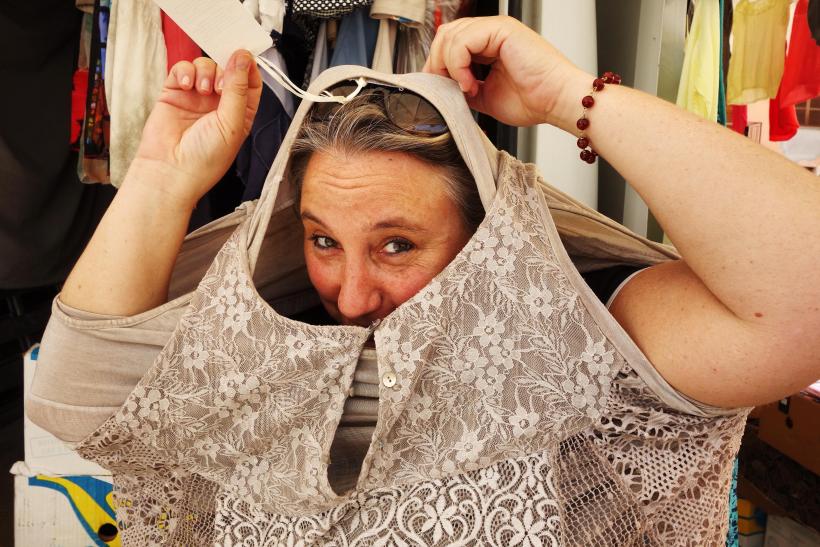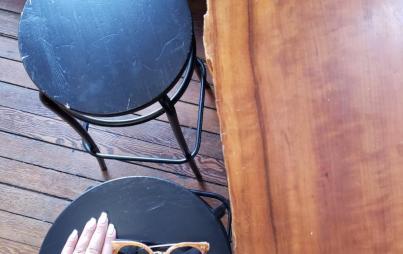
We are told that our bodies are simultaneously transitional and monolithic.
There are a few things that define the “American Dream,” but people can almost unanimously agree that wealth is one of its most common ideals. Americans are indoctrinated to desire aquisition from a very young age, and many of us believe that we must amass large amounts of money in order to be happy.
Wealth and luxury may look different for everyone, but those are just the details.
The overall arc of success is that it makes you rich, which allows you to be educated, well-dressed, and healthy — with access to whatever you want.
It continues from there to allow you meet someone who fits the same mold and continue making generations of fit, wealthy people.
One thing that nearly all images of wealth and luxury exclude is the idea of these things happening for fat people.
Think about it: Every car ad, every expensive perfume, fur coat, or lipstick kiss blown; every glass of champagne or scotch consumed for the camera, every five-star dinner, even gourmet chocolate… all images center thin women or muscular men with square jaws.
While one can rightfully argue the negative effects of any kind of exposure to extreme consumerism under a capitalist banner, it’s also important to discuss the negative effects of folks never being included in the narrative of what prosperity looks like for most Americans.
For those who were not born into wealth but are upwardly mobile, there’s the idea of becoming “The Woman Who Has It All.” She’s an able-bodied cis woman who juggles a glamorous, high-paying career while raising a family; being both a maid and a sex goddess for her husband; driving a beautiful expensive car; and dressing in the most fabulous fashion-forward clothing without an ounce of fat on her except for where it can be sexualized by the mainstream.
The message is clear: NO FATTIES.
Children are imbued with this vision of wealth and success from a young age. So what does that mean for fat kids? Well, they simply are not part of the narrative if their bodies cannot fit into it.
While one can rightfully argue the negative effects of any kind of exposure to extreme consumerism under a capitalist banner, it’s also important to discuss the negative effects of folks never being included in the narrative of what prosperity looks like for most Americans.
Fat people, especially women, are often denied jobs because of a perceived lack of health or “caring” about themselves, which employers equate to bigger picture issue like attention to detail, worth ethic, and attendance. Often, our fates are decided for us before the CV even hits the table. With fatphobic attitudes like this from employers, fat people are cut out of the opportunity to gain high-earning jobs and positions, further pushing us from the narrative of wealth, luxury, and success.
And even when financial gain is obtained and folks are thriving, most of us do not have access to the same level of quality products that our thin counterparts are lavished upon.
For every Kardashian or Taylor Swift, there’s a Leslie Jones, a Chrissy Metz, or a Gabourey Sidibe who have the money and still don’t have access to the same level of luxury product and designer clothing that their thin counterparts have. While the money buys you more access, it doesn’t guarantee that access will come in your size.
You Might Also Like: Take The Cake: Soda Tax Is Bigotry Masquerading As A Public Health Initiative
“A luxury piece excites you today, five years from now, and 10 years after that. It carries an innate emotional value you feel every time you put it on. The quality, craftsmanship, and love that went into creating each piece are apparent at first touch,” luxury designer Jeff Cafone explains. Beyond the psychology and big picture of the problem, one of the main issues is that big bodies have been relegated to fast-fashion.
Our clothing is as disposable as we are seen to be, likely to only make it a couple of seasons at most.
Despite the lack of representation and few options, there are folks within the luxury industry who welcome plus-size clientele with open arms and are hoping to change the way garments and services function for us. To get a better understanding of the industry and hurdles plus-size clientele face, we reached out to outerwear designer Jeff Cafone of All 67 and Crystal Carmen, creator of Pink Stiletto cosmetics and one of the partners behind Philadelphia’s only annual plus-size luxury fashion show Pink The Runway.
“Fast fashion is a numbers game. How many garments can company X get consumers to buy each season? And how can they get them to do it on repeat? It encourages wastefulness, terrible worker conditions, and poor quality," Cafone tells Ravishly. “In the case of my brand, I approached my leather jackets as a craftsman first and foremost. Design, feel, and fit are the top priorities. It takes great time and expense to perfect that, but it's the only way to achieve lasting results that will elevate the industry and improve the market.”
“You want to have core essentials that last and that fit well. This will make for longer lasting clothing, timeless style, and overall confidence when clothing lays the way you’d like it to. You would be surprised how much just swapping on better fabric can do for fit,” Carmen says. “You don’t have to break the bank to go luxe. You can mix and match high- and low-end, and thrift for vintage items to look and feel fabulous while extending the use and versatility of your clothing.”
“Well-made garments make for lower costs over time as the number of uses you get out of each piece is increased. Fast fashion is trend-dependent and often goes out of style as quickly as it came in; to keep up manufactures use the most cost effective fabrics and processes. Often patterns do not line up, or 3 scraps of fabric are used where one or two quality pieces would have sufficed,” says Carmen.
When you are walking through department stores, take notice. You’ll see certain trends lumped in with each other, as well as divisions of misses, maternity, juniors, outerwear, swimwear, and so forth. When you walk into a plus-size department, most of our pieces are lumped together. Considering 67 percent of the American population is considered plus-size, you wouldn’t know it by walking down any of the aisles, nor would you realize it by the lack of space which plus-size sections are allowed to occupy.
We are told that our bodies are simultaneously transitional and monolithic.
Merely a phase because we are all expected to be working to lose weight and be anything but fat, but we’re also all the same and can just wear any hodgepodge of trends glued and cut into one piece of ill-fitting polyester.
“Classic styling should not be size specific,” says Cafone. “I don't think we've seen enough differentiation or specialization in Plus. In straight size fashion, you can dress your personality, your aesthetic, your subculture, your budget. Every relevant brand is designed with a specific "look" or demographic in mind. But in Plus, you are grouped together almost solely by the size of your body. Where is the Rag and Bone of Plus? The Acne, the All Saints, the Helmut Lang, the St Laurent?”
“Every woman deserves to dress her budget and feel like the clothes she wears match her achievements in all other aspects of life. Higher-end luxury options are sorely missing in Plus fashion,” Cafone explains.
“It’s time to shed the outdated misconceptions about Plus bodies. Bigger women ARE willing to invest in themselves. Plus bodies are NOT all inherently transitional. You are who you are and should feel deserving of investment pieces. You DO deserve to wear luxury, and rock the same styles as your straight size friends.”








